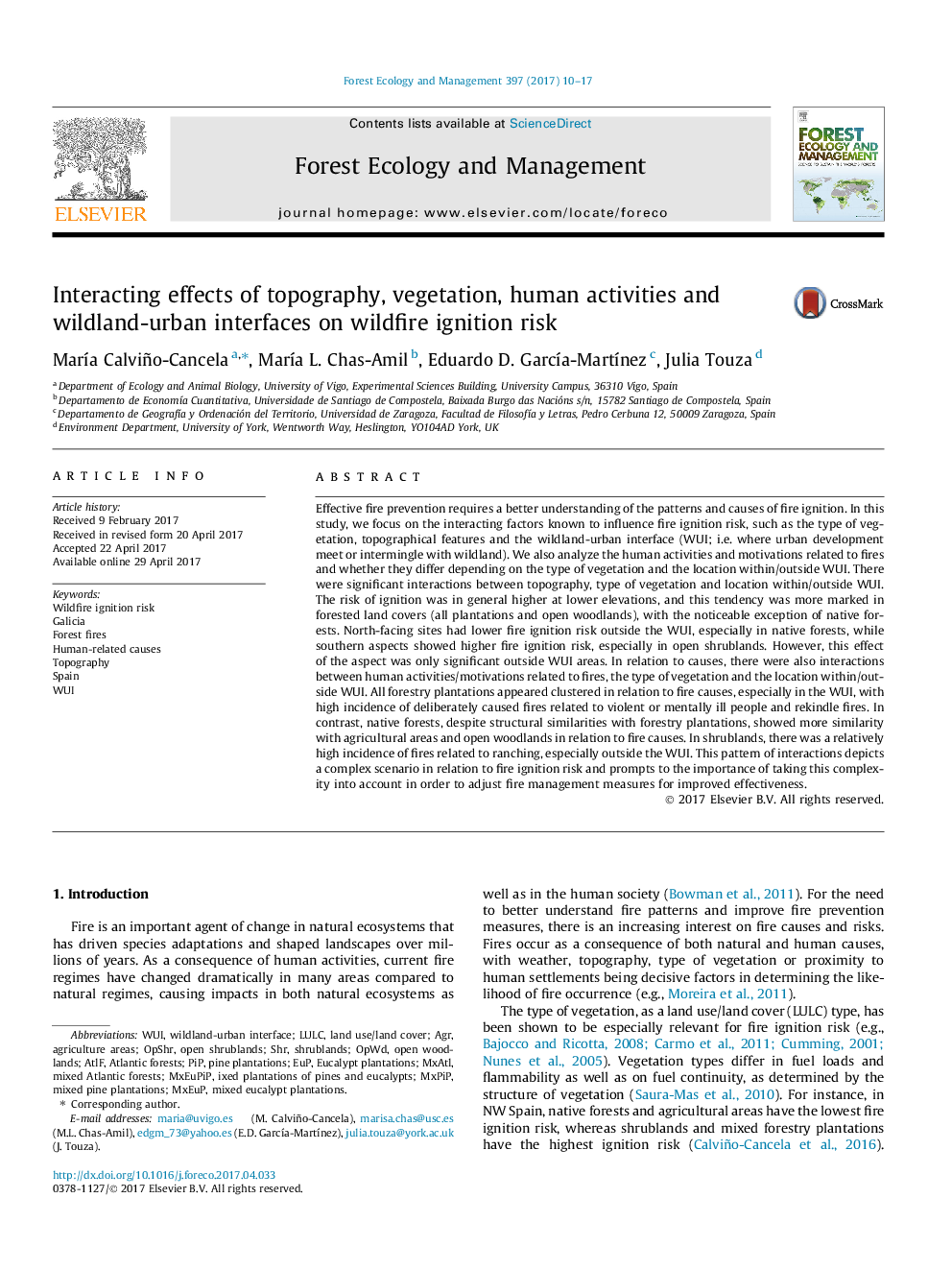| کد مقاله | کد نشریه | سال انتشار | مقاله انگلیسی | نسخه تمام متن |
|---|---|---|---|---|
| 6459340 | 1421361 | 2017 | 8 صفحه PDF | دانلود رایگان |
- We found important interactions between WUI, vegetation and topography.
- Fire causes differed depending on the type of vegetation and the WUI.
- Forestry plantations present a high incidence of deliberately caused fires.
- Native forests showed similarity with agricultural areas in relation to fire causes.
- Topography had a significant effect on the risk of fire.
Effective fire prevention requires a better understanding of the patterns and causes of fire ignition. In this study, we focus on the interacting factors known to influence fire ignition risk, such as the type of vegetation, topographical features and the wildland-urban interface (WUI; i.e. where urban development meet or intermingle with wildland). We also analyze the human activities and motivations related to fires and whether they differ depending on the type of vegetation and the location within/outside WUI. There were significant interactions between topography, type of vegetation and location within/outside WUI. The risk of ignition was in general higher at lower elevations, and this tendency was more marked in forested land covers (all plantations and open woodlands), with the noticeable exception of native forests. North-facing sites had lower fire ignition risk outside the WUI, especially in native forests, while southern aspects showed higher fire ignition risk, especially in open shrublands. However, this effect of the aspect was only significant outside WUI areas. In relation to causes, there were also interactions between human activities/motivations related to fires, the type of vegetation and the location within/outside WUI. All forestry plantations appeared clustered in relation to fire causes, especially in the WUI, with high incidence of deliberately caused fires related to violent or mentally ill people and rekindle fires. In contrast, native forests, despite structural similarities with forestry plantations, showed more similarity with agricultural areas and open woodlands in relation to fire causes. In shrublands, there was a relatively high incidence of fires related to ranching, especially outside the WUI. This pattern of interactions depicts a complex scenario in relation to fire ignition risk and prompts to the importance of taking this complexity into account in order to adjust fire management measures for improved effectiveness.
Journal: Forest Ecology and Management - Volume 397, 1 August 2017, Pages 10-17
